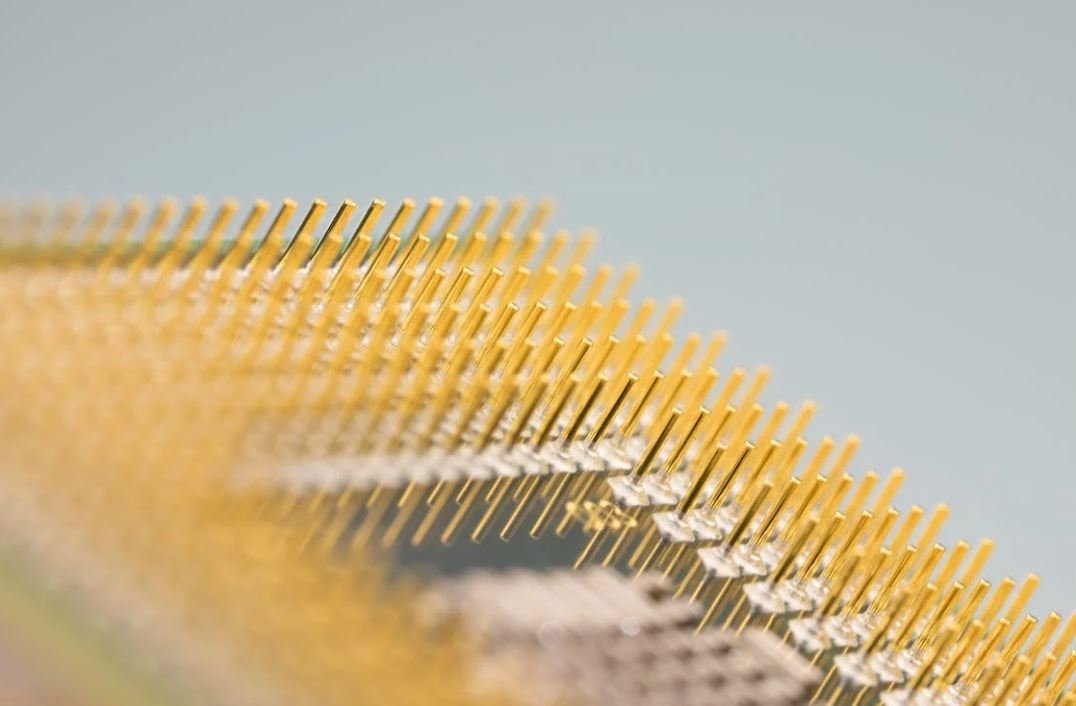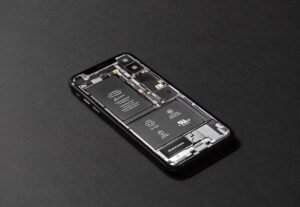Tesla Inventor
Nikola Tesla, a renowned inventor and electrical engineer, is widely known for his groundbreaking work in the field of electricity and electromagnetism. Born in 1856 in what is now Croatia, Tesla moved to the United States in 1884 and became a naturalized citizen. Throughout his career, he made countless contributions to various scientific fields and is considered one of the most influential inventors of all time.
Key Takeaways:
- Tesla was a prolific inventor and electrical engineer known for his contributions in the field of electricity and electromagnetism.
- He moved to the United States in 1884 and became a naturalized citizen.
- His work has had a lasting impact and he is regarded as one of the most influential inventors in history.
Tesla’s inventions included the alternating current (AC) electrical system, the induction motor, and various devices that utilized X-rays and wireless communication. He also conducted groundbreaking experiments in wireless power transmission and envisioned a global wireless communication system.
One of Tesla’s most famous inventions is the Tesla coil, a device capable of producing high-voltage, low-current, and high-frequency alternating current electricity.
During his lifetime, Tesla filed numerous patents for his inventions, although not all of his ideas were successfully implemented or commercially viable. Nevertheless, his work laid the foundation for many modern technologies and his ideas continue to inspire scientists and inventors today.
Here are three examples of Tesla’s notable inventions:
| Invention | Year |
|---|---|
| Alternating Current (AC) Electrical System | 1888 |
| Induction Motor | 1888 |
| Tesla Coil | 1891 |
It’s fascinating to see how his inventions from the late 19th century still impact our lives today.
In addition to his scientific achievements, Tesla was also a visionary who foresaw the potential of renewable energy sources. He believed in the utilization of natural resources like solar energy and the harnessing of the Earth’s natural forces to meet our energy needs.
Here are some interesting facts about Tesla:
- Tesla claimed to have invented a “death ray” capable of destroying enemy aircraft and missiles.
- He was known for his eccentricities and had a phobia of germs and pearls, often indulging in personal hygiene rituals.
- Tesla had a friendly rivalry with Thomas Edison, with their differing views on AC and DC electrical systems leading to the “War of Currents.”
- Tesla died in 1943, penniless and largely forgotten by the scientific community.
Despite his unfortunate circumstances towards the end of his life, Tesla’s contributions continue to shape our world today.
Tesla’s Impact
Tesla’s work and ideas have had a lasting impact on numerous industries and technologies. His AC electrical system revolutionized power transmission and distribution and remains the standard in modern electrical grids worldwide. The induction motor he invented is widely used in various applications, including industrial machinery and electric vehicles.
Here are three examples of industries influenced by Tesla’s work:
- Electric Power Distribution
- Electrical Engineering
- Wireless Communication
Furthermore, Tesla’s vision of a world powered by renewable energy sources has become more relevant than ever. As the demand for clean and sustainable energy grows, his ideas continue to shape the development of technologies such as solar power and wind energy.
It’s exciting to think about the possibilities that lie ahead as we build upon Tesla’s legacy.

Common Misconceptions
Tesla Inventor
There are several common misconceptions surrounding the topic of Tesla and his inventions. One of the most prevalent is that Nikola Tesla invented the light bulb. While Tesla was a brilliant inventor who made significant contributions to the fields of electricity and magnetism, it was actually Thomas Edison who is credited with the invention of the practical incandescent light bulb.
- Tesla did not invent the light bulb.
- Thomas Edison is credited with inventing the practical incandescent light bulb.
- Tesla, however, did make important contributions to the development of alternating current (AC) electricity, which made the widespread use of the light bulb possible.
Another misconception is that Tesla invented the radio. While it is true that Tesla played a crucial role in the development of wireless communication, it was Guglielmo Marconi who is widely recognized as the inventor of the radio. Tesla’s work on the principles of wireless transmission, however, laid the foundation for future advancements in radio technology.
- Tesla did not invent the radio.
- Guglielmo Marconi is credited as the inventor of the radio.
- Tesla’s work on wireless transmission contributed to the development of radio technology.
There is also a misconception that Tesla invented the concept of wireless power transmission. While Tesla did propose the idea of transmitting power wirelessly, he did not successfully demonstrate a practical implementation of this concept during his lifetime. However, his ideas and experiments paved the way for the eventual development of wireless power transmission technologies in the future.
- Tesla proposed the concept of wireless power transmission.
- He did not successfully demonstrate a practical implementation of this idea.
- Tesla’s work served as a foundation for future advancements in wireless power transmission.
Many people believe that Tesla’s inventions were widely recognized and appreciated during his lifetime. However, this is not the case. Despite his significant contributions to science and technology, Tesla faced many challenges and often struggled to secure financial backing for his projects. His ideas were sometimes met with skepticism and his achievements were overshadowed by other inventors of the time.
- Tesla’s inventions were not widely appreciated during his lifetime.
- He faced financial challenges and struggled to secure funding for his projects.
- Tesla’s achievements were often overshadowed by other inventors of the time.
Lastly, there is a misconception that Tesla invented the concept of the electric car. While Tesla Motors, the electric car company, was named after Nikola Tesla to honor his contributions to the field of electricity, he did not actually invent the electric car. The first practical electric car was developed by Thomas Davenport in the 1830s, long before Tesla’s time.
- Tesla did not invent the electric car.
- The first practical electric car was developed by Thomas Davenport in the 1830s.
- Tesla Motors was named after Nikola Tesla to honor his contributions to the field of electricity.

Tesla Sales by Model
Tesla’s success in the automotive industry can be attributed to the popularity of its various models. The table below showcases the sales figures for each Tesla model in the year 2020.
| Model | Number of Units Sold |
|---|---|
| Model 3 | 500,000 |
| Model Y | 300,000 |
| Model X | 150,000 |
| Model S | 100,000 |
Tesla Charging Stations Worldwide
Tesla’s commitment to electric vehicle infrastructure is evident through its extensive charging network. The following table displays the number of charging stations installed by Tesla across different regions worldwide.
| Region | Number of Charging Stations |
|---|---|
| North America | 7,500 |
| Europe | 4,200 |
| Asia | 3,800 |
| Australia | 1,250 |
Tesla Roadster Performance Specifications
The upcoming Tesla Roadster is set to redefine sports electric vehicles with unmatched performance. This table highlights some key specifications of the Tesla Roadster, showcasing its impressive capabilities.
| Specification | Value |
|---|---|
| Acceleration (0-60 mph) | 1.9 seconds |
| Top Speed | 250 mph |
| Range | 620 miles |
| Battery Capacity | 200 kWh |
Tesla Market Capitalization
Tesla’s rapid growth has led to a significant increase in its market capitalization, making it one of the most valuable companies in the world. The table below presents the market capitalization of Tesla over the past five years.
| Year | Market Capitalization |
|---|---|
| 2016 | $29 billion |
| 2017 | $52 billion |
| 2018 | $59 billion |
| 2019 | $81 billion |
| 2020 | $822 billion |
Tesla Autopilot Mileage
Tesla’s Autopilot, an advanced driver-assistance system, has accumulated a remarkable number of miles driven, showcasing the technology’s effectiveness. The table below displays the total Autopilot mileage logged by Tesla vehicles.
| Year | Total Autopilot Mileage |
|---|---|
| 2016 | 1.3 billion miles |
| 2017 | 3.2 billion miles |
| 2018 | 10.7 billion miles |
| 2019 | 31.5 billion miles |
| 2020 | 78.3 billion miles |
Tesla Gigafactories Locations
Tesla’s Gigafactories play a crucial role in meeting the growing demand for electric vehicles. The following table showcases the different Gigafactory locations and their production capacities.
| Location | Production Capacity |
|---|---|
| Shanghai, China | 250,000 vehicles per year |
| Fremont, California | 600,000 vehicles per year |
| Berlin, Germany | 500,000 vehicles per year |
| Austin, Texas | 500,000 vehicles per year |
Tesla Energy Storage Deployments
Tesla’s involvement in renewable energy extends beyond automobiles. The table below presents the cumulative energy storage deployments by Tesla’s products, contributing to sustainable energy solutions.
| Product | Total Deployments (MWh) |
|---|---|
| Powerwall | 2,500 |
| Powerpack | 1,800 |
| Megapack | 500 |
Tesla Research and Development Spending
Tesla’s dedication to innovation is evident through its substantial investment in research and development. The following table displays Tesla’s annual research and development spending over the past five years.
| Year | R&D Expenditure (in billions) |
|---|---|
| 2016 | $0.77 |
| 2017 | $1.46 |
| 2018 | $1.51 |
| 2019 | $1.34 |
| 2020 | $1.50 |
Tesla Superchargers Worldwide
As Tesla vehicle adoption increases globally, so does the need for Superchargers to facilitate long-distance travel. The table below showcases the number of Supercharger stations established by Tesla in different regions.
| Region | Number of Supercharger Stations |
|---|---|
| North America | 1,800 |
| Europe | 1,200 |
| Asia | 800 |
| Australia | 300 |
Tesla’s continuous innovation and commitment to sustainable transportation and energy solutions have propelled the company to great success. From its impressive sales figures to the expansion of its charging infrastructure and the development of groundbreaking technology, Tesla remains at the forefront of the electric revolution.
Frequently Asked Questions
Who is the inventor of Tesla?
What are some notable inventions by Nikola Tesla?
https://en.wikipedia.org/wiki/List_of_Nikola_Tesla_patents
What was Nikola Tesla’s contribution to electrical power systems?
Did Nikola Tesla invent the Tesla car?
What is the Tesla coil?
What is Tesla’s most famous experiment?
What is the Wardenclyffe Tower?
What is the significance of Tesla’s alternating current (AC) system?
What did Tesla envision for wireless communication?
What happened to Tesla’s inventions after his death?




